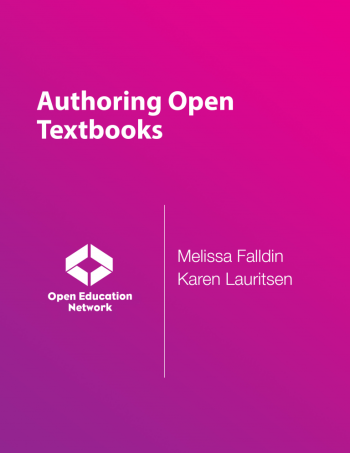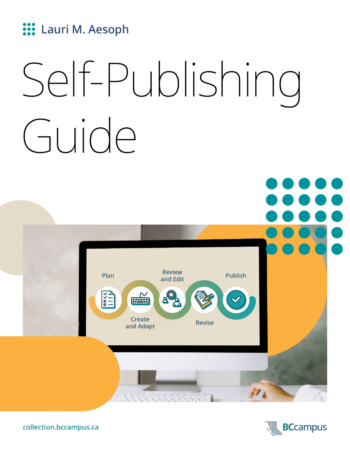Once you've explored what OERs already exist, you may decide that no existing OERs meet your needs or could be adapted or modified to meet them. If that's the case, you may decide you'd like to create your own OER. You may also have developed an OER adaptation and are looking to publish it. This page provides links to workflows, publishing guides, and publishing tools that you can use.
To get started and plan your OER creation process, check out this OER Workflow created by Billy Meinke and University of Hawaiʻi at Mānoa Outreach College.
 Authoring Open Textbooks
by
Melissa Faldin and Karen Lauritsen
Authoring Open Textbooks
by
Melissa Faldin and Karen Lauritsen
 BCcampus Open Education Self-Publishing Guide
by
Lauri M. Aesoph
BCcampus Open Education Self-Publishing Guide
by
Lauri M. Aesoph
 A Guide to Making Open Textbooks with Students
by
Elizabeth Mays
A Guide to Making Open Textbooks with Students
by
Elizabeth Mays
Below are a number of OER publishing tools. When choosing one, it's important to consider how you hope others, including your students or other instutitions, will discover your work.
Michele DeSilva and Amy Hofer created this comparative analysis to help you understand the features and limitations of each tool.
Explore any of the tools below to determine which will work best for your needs in authoring and distributing OERs:
To ensure the quality of your OER, you may decide to invite a colleague or other subject matter expert to review your OER. Or, you might decide to test your textbook in the classroom and gather student feedback to determine how it could be improved.
Things to consider:
Consider using this list of questions for subject matter experts if you ask one to review your OER: